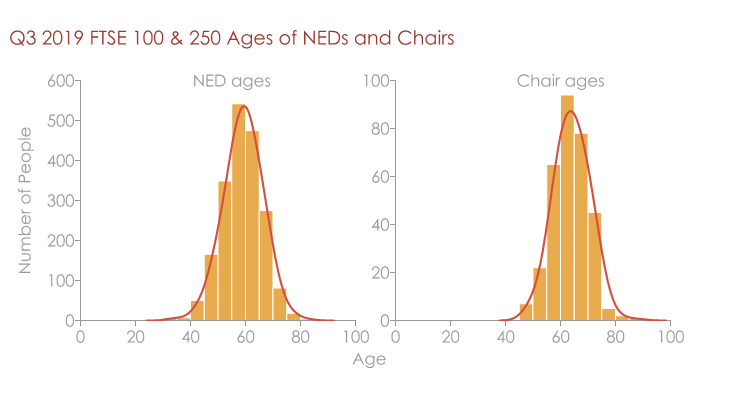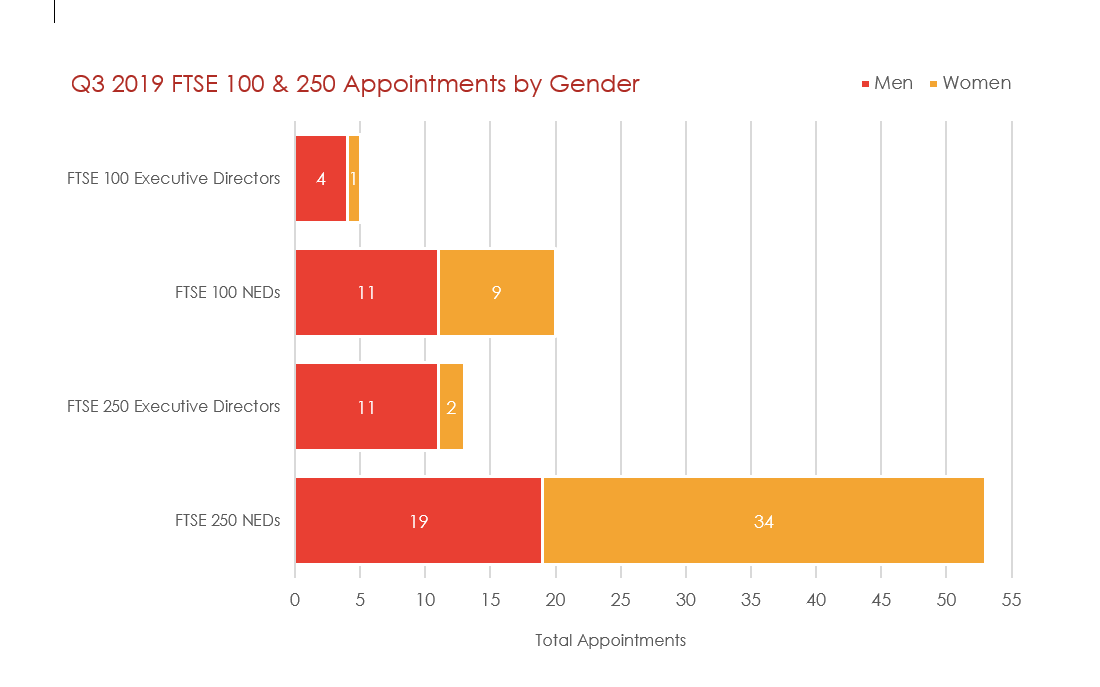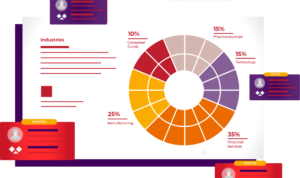Overview
Fans of the recently released podcast, “Thirteen Minutes to the Moon”, will know that the average age of the team in Mission Control for the Apollo 11 moon landing was, amazingly, only 26. The oldest member of the team, the Flight Director Gene Krantz, was 35. The sheer magnitude, complexity and pace of mission critical, and life critical, decision making that this team faced and, seemingly, cooly dealt with in those last 13 minutes is simply extraordinary.
This author does not suggest a direct analogy but this provides a nice segue to a brief examination of the average age in the UK Plc boardrooms.
The UK’s biggest companies are governed by older people
The average age of the non-executive directors governing the FTSE 350 companies is 59. None of them is below the age of 30 and only a handful are even in their 30s, primarily the nonindependent shareholder appointees. For the purposes of this discussion we are excluding 29 year old Cally Price who is an employee/workforce representative appointed to the Sports Direct board (more on this later). The absolute age range is 32 – 84. No one will be surprised to learn that 84% of those non-executive directors are aged between 50 and 70. One hundred and twenty-eight of them are in their 70s and six are in their 80s. The female NED’s average 57 years and the males 60.
At the young end of the spectrum, Nadia Manzoor (33) sits on the board of FTSE 250 company JP Morgan American Investment Trust Plc having been appointed to that board when she was just 30 – and at that time the youngest ever woman to be appointed to the board of a company listed on the London Stock Exchange. Another is Jambu Palaniappan (also 33), recently appointed to the board of FTSE 100 company Just Eat Plc, as we noted in our last report.
Chairmen are older still
With age comes wisdom? For the 318 chairmen of the FTSE 350 companies (a number of them chair more than one company), the average age is 64 and the age range is 48 – 88. Amongst the 318 chairmen, only 26 (8%) are women ranging in age between 50 and 75. The female chairmen average 60 years and the males 65. There are no surprises here.
Age diversity
Gender diversity has been the biggest “governance” issue for boards in recent years. While ethnic diversity attracts some limited discussion (see Sir John Parker’s independent review of the Ethnic Diversity of UK boards published in October 2017), age diversity is hardly ever discussed. When the mandate from the chaiman says “age diversity”, he/she means finding someone in their 50s! Certainly not 30s.
Of course a range of ages from 32 – 84 is “diverse” but the average age of FTSE 350 chairman and non-executive directors, male and female, hovers at around 60 and is concentrated around that average as clearly shown in the charts below. Somewhat surprisingly, the average age of the boards (non-executives) of the AIM listed companies is even higher at 62 and, for international comparison, the average age of non-executive directors on the boards of companies listed in the S&P 500 is older again at 63.
There is outstanding male and female executive talent in the 35 – 45 age range, and while not every busy executive will have the capacity for a non-executive directorship, there are plenty that are well qualified, competent and relevant and who will make the time, often encouraged to do so by their boards. They will benefit greatly from the experience and are likely to make a positive difference to the decision making of the boards that they join. Perhaps we need the “Thirty Year Old” Club to complement the “Thirty Percent” Club!

As discussed above, we excluded 29 year old Cally Price from our averages as she is a nonindependant employee/workforce representative. By rights, we should have tried to exclude all the employee appointees as they skew the average age lower but it is difficult to identify all of them and the key message is not materially affected.
Moving on. As we have done in our reports for Q1 & 2, 2019, this report reviews the FTSE 350 board appointments in the three months ending 30 September 2019. We again analyse the nonexecutive and executive director appointments to the FTSE 350 companies and explore the trends.
Q3 FTSE 100 DIRECTOR APPOINTMENTS
In Q3, the FTSE 100 companies appointed five executive directors (one female) and twenty nonexecutive directors, including Jon Symonds as chairman of GlaksoSmithKline Plc, succeeding Sir Philip Hampton, co-author of the Hampton-Alexander Report. Nine (45%) of those non-executives are female meaning that the proporation of women as non-executive directors in the FTSE 100 continues to grow (currently 38%) and this trend is even stronger amongst the FTSE 250 companies, as we discuss below.

Q3 FTSE 250 DIRECTOR APPOINTMENTS
In Q3, the FTSE 250 companies appointed 13 executive directors (two females) and 53 nonexecutive directors of which 34 (64%) were women. These NED appointments included four chairman/chairman designate appointments including one woman, Claire Hollingworth, chairman designate of The Go-Ahead Group Plc who replaced Andrew Allner.
In our 2018 report, we noted that women dominated the non-executive director appointments. More than 50% of the apointments in 2018 across the FTSE 350 were women. In 2018, the FTSE 100 boards led in gender diversity but the trend now at the FTSE 250 level is clear to see – in 2018 women made up 47% of the FTSE 250 NED appointments; in Q1 2019 it was 50%; in Q2 it was 62%; in Q3 it was 64%!
Despite this trend men still absolutely dominate the ranks of chairmen (92% male) and CEOs (95% male), as we pointed out in our last report.




